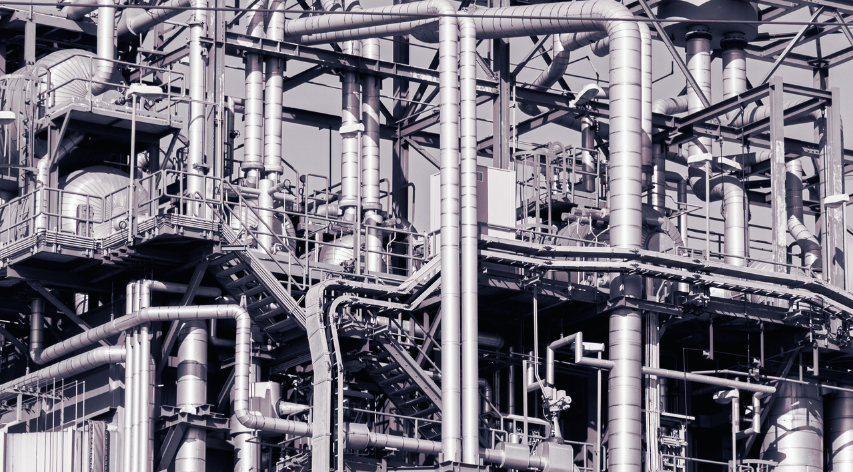Changing Your Crude Slate – Short and Long Term Consequences
There are many reasons why a refinery may want to change their crude slates. However, all of them boil down to economics. Whether a cheaper crude is available or there is a desire to manufacture specific products to increase profitability – money is the driver. However, in deciding to change your crude slate, the long term effects of those changes can go overlooked, costing significantly more money in the long run.
Whatever the reasons for the crude slate change may be, it is important to keep in mind the processabilty of the crude. For example, perhaps a refinery wants to process more of the shale crudes (Bakken, Marcellus, or Eagle Ford) due to pricing advantages. Or the refinery wants to bring in large shipments of foreign crudes, again because of price advantages. A common, significant aspect of both of these crudes is that they can be very high in hydrogen sulfide (H2S) content. In the interest of safety, prior to delivery, by ship or tank car, a H2S scavenger is used to protect workers from overly high levels of H2S. The least expensive and most common scavenger used in the industry is MEA based. However, if this scavenger is not removed, there is a very high likelihood that significant corrosion will occur.
The main issue is that the MEA will mix with hydrochloric acid (HCl) in the crude tower, which can lead to increased salt formations. Additionally, the levels of contaminants required to make the MEA salt and ammonium chloride (NH4Cl), can only be measured in the crude tower overhead drum, not in the crude tower. The only evidence of salt formation is corrosion. Lastly, the NH4Cl and MEA salt can carry downstream to other units such as hydrotreaters and / or hydro desulfurizers. Often there is significant stainless steel alloy present in these types of units. These alloys are particularly susceptible to chloride stress corrosion cracking (Cl-SCC) from the chloride contained in these salts. This will result in significant repair costs.
So what is the best approach to reduce salt formation in the Crude Distillation Unit (CDU), salt carry over to downstream units and decease corrosion costs? The answer is simple – remove as many of the amines that come with the crude, and decrease the amount of chlorides in the CDU. Easier said the done!
Let’s start with reduction of amines in the crude. The easiest way to accomplish this is to have pH control of the desalter wash water effluent. As the pH of the water wash is lowered, amine partitioning into the water naturally occurs. At a pH of approximately 5, about 85% to 90% of the amines that came in with the crude will be removed and go out with the wash water. A good industry pH range for the wash water effluent is 5 to 6. This pH range is easily achieved by acidification of the water wash.
The next challenge is to reduce the amount of salt leaving the desalter. If acidification of wash water (to control pH) is used, one natural consequence will be better desalting. An additional technique used to decrease salt leaving the desalter is the injection of low concentrations of sodium hydroxide (NaOH) into the desalted crude. The NaOH will convert any HCl present; hydrolyzed upstream of the crude tower, to sodium chloride (NaCl) which is not easily hydrolyzed to form HCl. Because HCl is one of the main components of the two salts discussed above, reducing the HCl needs to be a high priority.
It is important to note that while NaOH injection can help to reduce or eliminate HCl, there are second and third order effects to be considered. Sodium is a Fluid Catalytic Cracking Unit (FCCU) catalyst poison, so if crude tower bottoms go directly to a FCCU, an economic evaluation will need to be completed to understand the impact of NaOH injection on feed stock to that unit. Additionally, NaOH is a known precursor to coke formation in coker unit heaters. Here again the coker burn rates will need to be analyzed to understand the economics of NaOH injection and the long term impact on the Coker Unit operation.
Another aspect of changing crude slates is the potential for high temperature corrosion, i.e. sulfidation corrosion and naphthenic acid corrosion. The balance of reactive sulfur and overall levels of naphthenic acid in crudes is important. Naphthenic acid corrosion prediction is challenging because a number of factors interact, including flow regime shear stress, the types of acid species, and the presence of iron sulfide (FeS) film to help reduce corrosion rates. An evaluation which identifies wall shear/velocities, sulfur (S) content of the whole crude and side streams and the Sulfur:TAN (total acid number) ratios for all streams should be completed to understand the impact on piping and equipment to ensure the weakest links are identified. Typical solutions to minimize corrosion are; but not limited to, crude blending which creates a blend that has sufficient S for the naphthenic acid content (care must be taken to ensure the S is evenly distributed to all side streams), injection of special naphthenic acid inhibitors or alloying up (317L SS, etc.).
As mentioned at the beginning, making changes to your crude slate will always come down to economics. However, as identified in only a handful of examples, it is important to consider the potentially negative effects of such changes. In addition, if the decision is still made to make a change, it is vital to have a plan in place to deal with the effects.
Have a question regarding your crude selection decisions or would like more information? You may post to this blog or click the link below for more help.
[readon2 url=”index.php?option=com_rsform&view=rsform&formId=4&Itemid=739&lang=en”]Request Info[/readon2]







